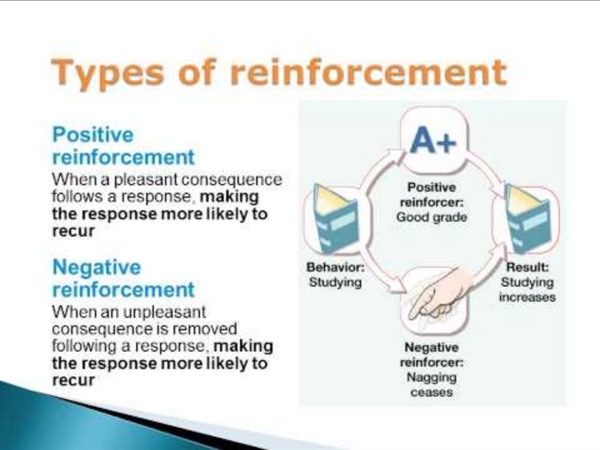Operant Conditioning: Positive and Negative Reinforcement and Punishment
http://www.youtube.com/watch?v=PbusPzk-sY0
Related: [(PSY 108) The Application of Reinforcement and Punishment by the Singapore's Traffic Police to Promote Road Safety]
• Parenting Tips: Influencing Behaviour of Your Teenage Children
The effect of using punishment
Punishment is a term used in operant conditioning to refer to any change that occurs after a behavior that reduces the likelihood that that behavior will occur again in the future. While positive and negative reinforcements are used to increase behaviors, punishment is focused on reducing or eliminating unwanted behaviors. Punishment is often mistakenly confused with negative reinforcement.
10 Positive Punishment Techniques & Their Effect
By: Ashley Brown Updated February 11, 2021 Medically Reviewed By: Laura Angers As a parent, it is natural to wonder about the best way to teach your child right from wrong. Punishing them is no fun, but sometimes it has to be done if you want their behavior to change. Not everyone will agree on how you should punish your child, but some experts are convinced that positive punishment techniques are the best approach.
The Effects of Positive and Negative Reinforcement
By Chron Contributor Updated August 04, 2020 Positive reinforcement involves rewarding an employee for doing a good job. An example would be giving an employee a paid vacation day for exceeding monthly production goals.
Examples of Positive Punishment & Negative Reinforcement
You might be thinking that “positive punishment” sounds like an oxymoron, after all, how can punishment be positive? Not many people “like” punishment, right? The disconnect in understanding this concept comes from the usage of the word “positive;” here at PositivePsychology.com, we generally use the term “positive” to refer to things that are inherently good, things that are life-giving, and things that promote thriving and flourishing. The concept of positive punishment comes from a very different era and a very different perspective on psychology; namely, the 1930s and behaviorism. So, what actually is positive punishment and how does it relate to parenting, teaching, and even the workplace? Before you read on, we thought you might like to download our 3 Positive Psychology Exercises for free.
What is Negative Punishment (Examples and Effectiveness)
In this article, we will review negative punishment, its definition, examples, and drawbacks. American psychologist B.F. Skinner developed the theory of operant conditioning, which stated that a person or animal’s behavior could be increased or decreased by adding or removing appropriate stimuli after the behavior is exhibited. The difference between classical conditioning and operant conditioning is that classical affects unconscious behavior, while operant affects conscious behavior. Within operant, punishment aims to reduce a behavior while reinforcement increase a behavior.
Related:



